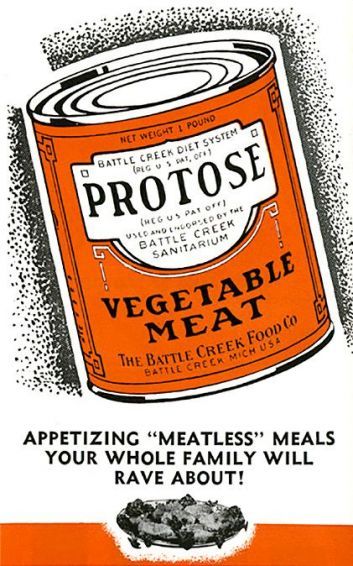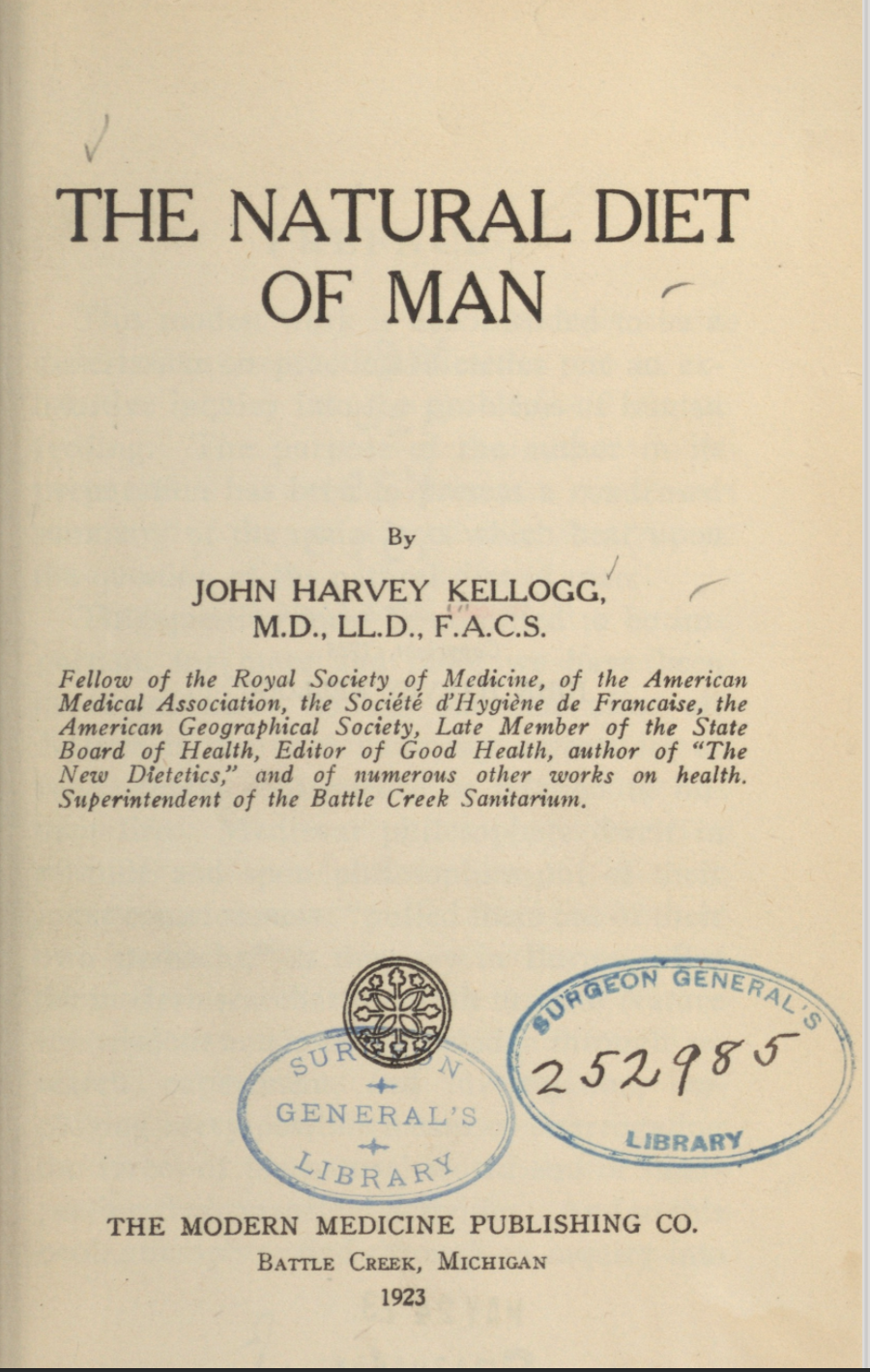#72 When Impossible Burgers Became Possible

This is the story of meat alternatives - the incredible evolution of making meat from plants. It seems like every day there’s a new option for people to replace meat products with vegetarian products. Today we can get vegetarian versions of everything from burgers to nuggets.
Meat alternatives are sometimes also called imitation meats, meat analogues, and fake meats. There’s a lot of debate around what these products should be called. For example, the meat industry doesn’t like the term “plant-based” “meats”. Names are important - names influence what we think about something. Would you rather buy something called a “veggie burger” or the same thing, but called a “veggie disc”. Would you rather buy a “vegetarian sausage” or a “veggie tube”? These are real names suggested for labeling meat alternatives. Anyhow the naming debate has been going on for quite some time. According to William Shurtleff, co-author of the highly informational book, “History of Meat Alternatives”, the term “meat alternative” didn’t become widely used until the 1990s. The term was first used in 1919 in an ad from the meat company “Armour and Company”.
The imitation of animal meats began with Buddhist monks in China. Of course, being vegetarians themselves, these meat alternatives were created for other people visiting the monasteries who might not be as familiar with vegetarian meals. Soybeans, vegetables, and wheat gluten were all used by monks in meat imitation. Nowadays, companies like Impossible Foods are making vegetarian meats that are incredibly similar to animal meats. Impossible Burgers even appear as pinkish and raw, so you get the cooking experience of searing it to brown. How did we get to this point?
In the 1800s in America, we started to see references to meat substitutes, such as vegetable sausages and vegetable turkeys. It was in 1850 that the American Vegetarian Society was formed. This was after William Metcalfe organized the American Vegetarian Convention that brought together influential speakers such as Sylvester Graham (of Graham cracker fame). Then in 1852 - which was a year after Sylvester Graham’s death, John Harvey Kellogg was born - of course of Kellogg’s corn flakes fame. This is all important because Kellogg read works by Sylvester Graham and was influenced by his ideas about diet. Like Sylvester Graham, Kellogg believed strongly in a vegetarian diet. So, in 1889, Kellogg started the Sanitas Nut Food Company, which sold meat substitutes that were often made with nuts. The Sanitas Nut Food Company’s products called “protose” and “nuttose” were the first commercial meat substitutes in the West. These were launched in the late 1890s.

In Dr. Kellogg’s 1923 publication titled, “The Natural Diet of Man”, he noted that he created the nut-based meat recipes years earlier when a professor named Charles Dabney asked him to experiment in creating a vegetable substitute for meat. Charles Dabney had been working for the Department of Agriculture when he asked Kellogg to make a meat replacement. Dabney was concerned about meat getting too expensive for the rising population and felt that a vegetable substitute would be the solution. Here’s a quote from the book: “The result of the experiment undertaken was Protose, a nut-cereal preparation, which to a considerable degree resembles meat in appearance, taste and odor, having a slight fibre like potted meat. Earlier experiments made by the writer led to the production of peanut butter […]”. So in Dr. Kellogg’s 1923 book, he mentioned creating peanut butter while experimenting to make meat alternatives! If you want to read more from Dr. Kellogg’s book, you can view it online at the U.S. National Library of Medicine Digital Collections website. It’s a fascinating read! This was during the progressive era of the 1890s to 1920s - a time of activism and reform. This was a time when food purity was under a lot of scrutiny. For example, Upton Sinclair published The Jungle in 1906, describing horrible working conditions in the meat industry and The Pure Food and Drug Act was passed that same year, and then the Food and Drug Administration was also formed that year - all in 1906.

Let’s fast forward to today, over a hundred years from the launch of the first commercial meat substitutes in the West and we now have things like Impossible Burgers. I spoke to Sue Klapholz who is the Vice President of Nutrition and Health at Impossible Foods. Her husband is Patrick Brown, the founder of Impossible Foods, so she has been there since the beginning! Sue talked to me about the founding of Impossible Foods. A couple years before Impossible Foods was founded in 2011, Pat took a sabbatical from Stanford in order to work on solving a problem that would have a great impact on the planet. He decided that climate change was an incredibly important problem to work on, and that animal agriculture was a major contributor to the problem. So the solution that he came up with was to create plant-based products to replace meat products. He knew that in order to get meat-eaters to switch to plant-based meats, the product would have to be just as delicious, nutritious, and affordable. If you can’t tell the difference then why not pick the product that’s better for the environment, right? Laura Kliman (the principal scientist on the product innovation team) explained to me the impact of switching out animal meats for plant-based meats. She said that “For every pound of Impossible meat that you eat instead of the animal meat, you will save 30 pounds of greenhouse gas emissions and 290 square feet of land. And then the biggest one to me is like 90 gallons of water."

"So every pound of cow beef uses 90 gallons of water, which is crazy.” - Laura Kliman
So Pat Brown decided to create the ultimate meat substitute. With that in mind, he set out looking for a substitute for myoglobin that would come from plants. Myoglobin is a heme carrying protein in muscle. Pat went up to a hill behind his house and picked clovers to take home and dissect in his kitchen. Using a pair of tweezers and a magnifying glass, Pat showed that the root nodules contained heme. Heme is a key to creating meat-like flavor. Ranjani Varadan, the Vice President of Research and Design at Impossible Foods told me that they tried different types of plant hemoglobins, but eventually chose to use soy leghemoglobin from soy plants. Anyhow, with this important discovery, Pat was able to secure funds from venture capitalists and found the company which is now called Impossible Foods.

When Impossible Foods was first formed, it was not called Impossible Foods. At first, it was called Meat 2.0, then it became Sandhill foods, then it was called Maraxi (a Costanoan Indian word that means leaf), and then it became Impossible Foods.
Aside from making Impossible Burgers and Impossible Pork, the company has dabbled in making different kinds of vegetarian products that replace animal products (for example chicken, fish, eggs, and milk). Who knows what other Impossible Foods will become possible next? Here’s hoping for Impossible Dumplings and Impossible Lobster Rolls!
Special Thanks to Our Interviewees:
William Shurtleff - co-author of History of Meat Alternatives
Sue Klapholz - Vice President of Nutrition and Health at Impossible Foods
Laura Kliman - Senior Flavor Scientist at Impossible Foods
Ranjani Varadan - Vice President of Research and Design at Impossible Foods

